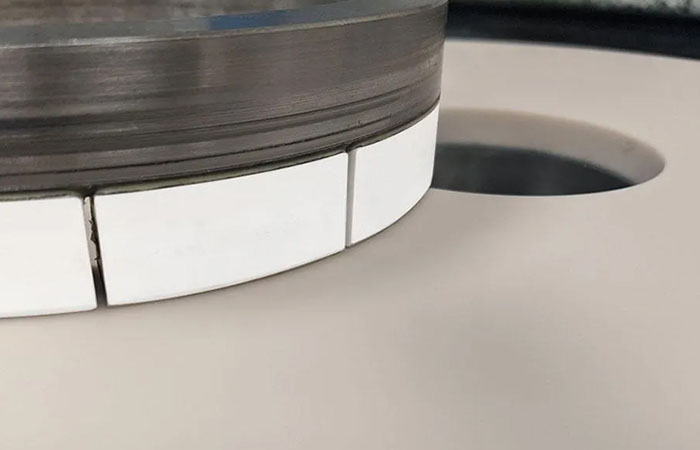
The majority of superfinishing operations, those where materials need to be polished to an Ra value below 0.01µm, raise a number of issues that until now have meant compromise rather than ideal solutions.
Typically if you are starting with a machined component the challenge is how to produce a superfinish in the most economical way. To date, the most common solution would involve a lapping operation to first produce a flat surface with a uniform surface finish, followed by a polishing operation which in many cases involves a polishing pad to generate the superfinish.
This is an acceptable solution for many parts, but one side effect from any pad polishing process is the removal of any sharp edges. This is called roll-off and can be seen on the edges of many polished parts where the part has sunk into the polishing pad material and the edges have been softened by the nap of the pad. This effect becomes more obvious the longer a part is processed on the polishing pad, so it’s important to balance the speed of the lapping stage against the resulting surface finish in order to minimise the time on the polishing pad.
It is becoming more common for a component designer to ask for the sharp edges to be maintained. This is particularly evident on sealing components where roll off would cause parts to leak.
The new Kemet PR3 composite plate material, for use in combination with Kemet’s closely graded Liquid Diamond slurries and Diamond Compounds, has been developed to provide a solution to this issue. It can produce a surface finish value better than what you would expect from a purely polishing process but has the ability to remove material at the same time. It also has no metal content within the composite so is ideal for applications where components must not be in contact with metals, in particular nuclear and electronics. The lack of metal in the plate and the use of ceramic faced conditioning rings means parts are much cleaner after lapping, in particular white aluminium oxide based ceramic materials.
Since the surface finish after the PR3 is so good on many materials there would be no need to follow it with a pad polishing stage, but in circumstances, where secondary pad polishing is needed, the polishing time is short enough for no roll off to be produced.
Kemet offer free of charge testing for any lapping or polishing applications regardless of whether you already have a process.
Contact sales@kemet.co.uk for further details.










UK Enters ‘Golden Age of Nuclear’
The delay (nearly 8 years) in getting approval for the Rolls-Royce SMR is most worrying. Signifies a torpid and expensive system that is quite onerous...